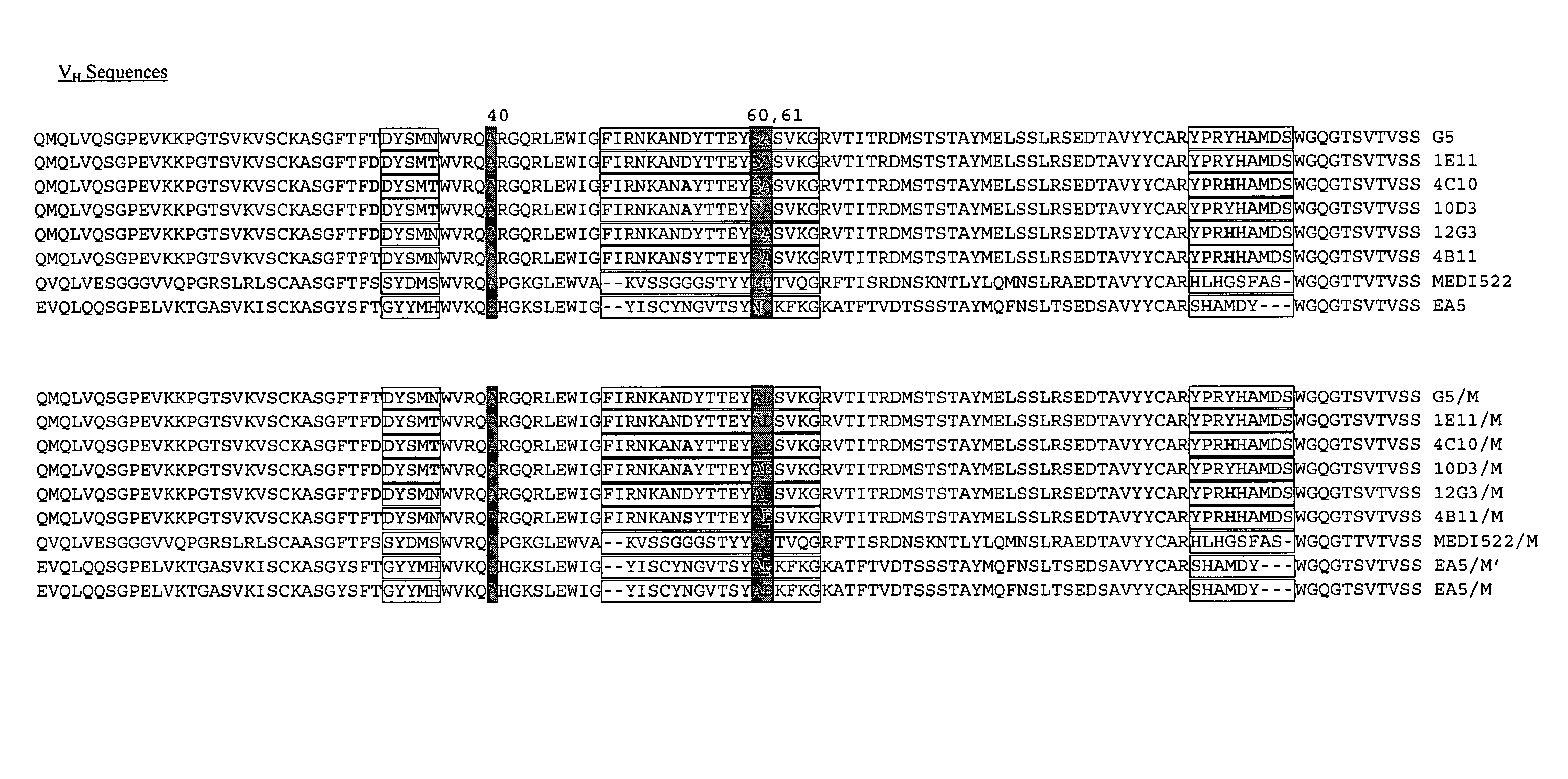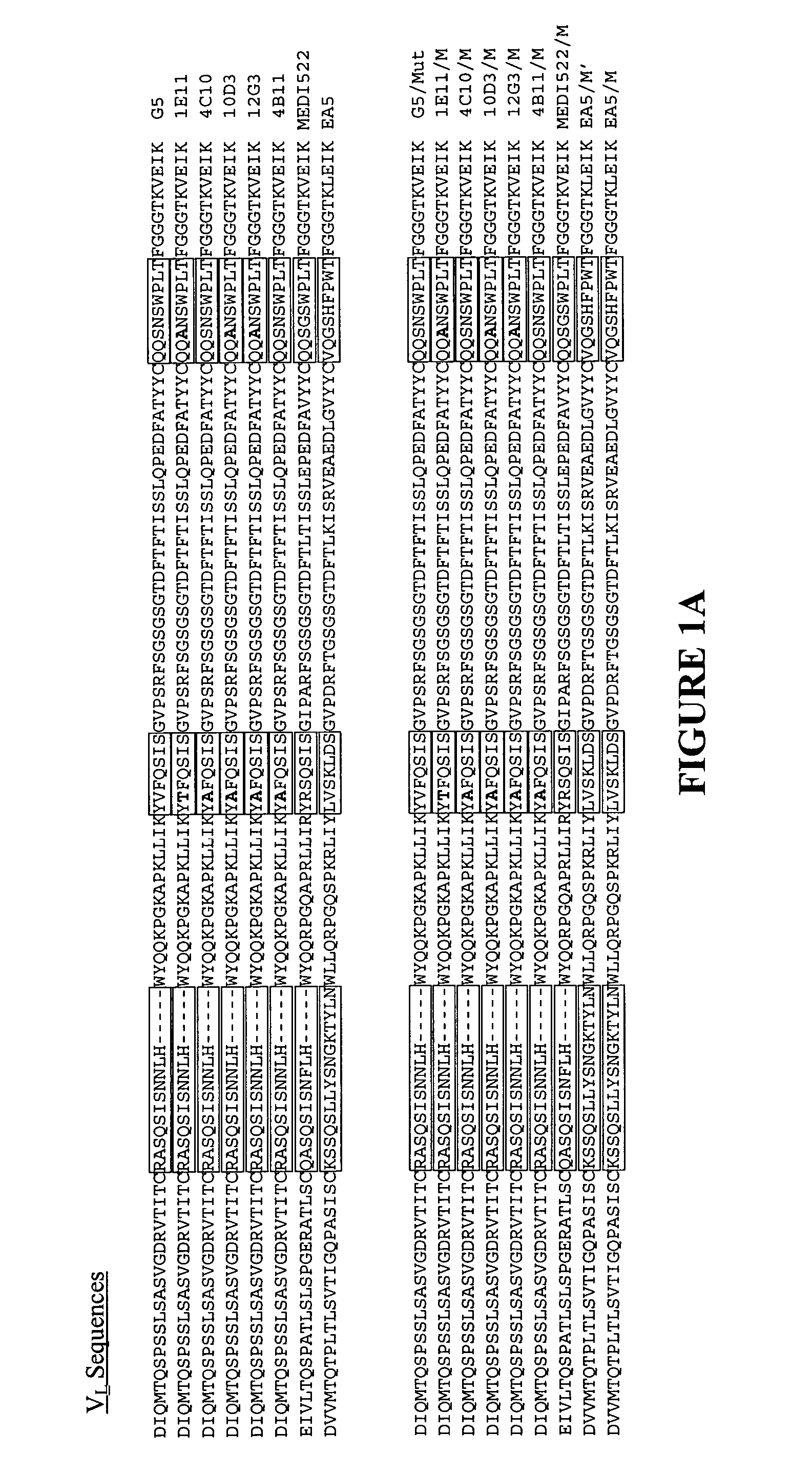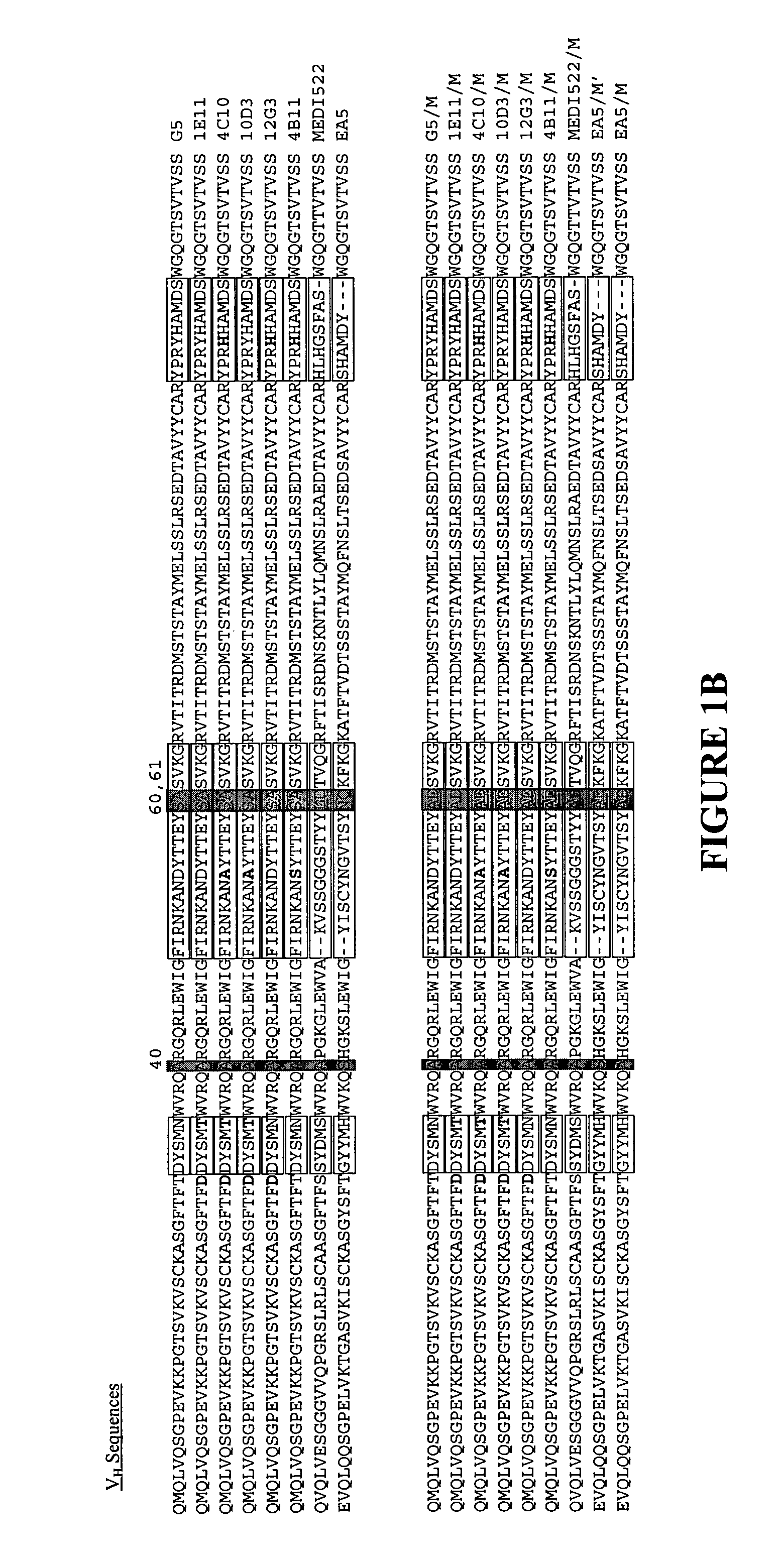Increasing the production of recombinant antibodies in mammalian cells by site-directed mutagenesis
a technology of site-directed mutagenesis and recombinant antibodies, which is applied in the direction of peptides, fused cells, genetically modified cells, etc., can solve the problems that the cdrs mutation can have an adverse effect on the antigen binding properties, and achieve the effect of negatively affecting antigen binding characteristics, and increasing expression levels and/or purification
- Summary
- Abstract
- Description
- Claims
- Application Information
AI Technical Summary
Benefits of technology
Problems solved by technology
Method used
Image
Examples
example 1
Generation and Expression of the Various Antibody Constructs
[0118] Six humanized monoclonal antibodies (G5, 10D3, 12G3, 1E11, 4C10, 4B11) and one human / mouse chimeric antibody (EA5) were generated against a common antigen, EphA2. All of these antibodies were poorly expressed in mammalian cells (see Table 3). Another humanized antibody, MEDI-522, which is expressed well in mammalian cells (see Table 3) was also used in these studies. One or more heavy chain substitutions at positions 40, 60 and / or 61 were generated in each of these antibodies to determine the effect on producibility by the presence of one or more preferred amino acid residues at these positions. Six of the humanized antibodies contained an Alanine at position H40, these antibodies were substituted with Alanine and Aspartate at positions H60 and H61 respectively. The last humanized antibody, MEDI-522 had both the H40 and H61 preferred amino acids, here position H60 was substituted with Alanine. The chimeric antibody,...
example 2
Analysis of the Binding Characteristics of the Modified Antibodies
[0125] Because two of the heavy chain substitutions (positions 60H and 61H, Kabat numbering) fall within the CDRs as defined by Kabat, it was possible that the general binding characteristics of the substituted antibodies had been altered. Remarkably, the modifications improved the yields for each of the six antibodies without significantly altering the binding specificity (see FIGS. 2A-C). Two of the modified antibodies were chosen for more extensive analysis. Surprisingly, the binding constants of one were improved by at least 20%, while the other remained virtually unchanged (see Table 4).
Materials and Methods
[0126] Binding Specificity via BIAcore Analysis:
[0127] The interaction of immobilized EphA2-Fc or αvβ3 with IgG-containing transfection supernatants corresponding to clones G5, G5 / M, 10D3, 10D3 / M, 12G3, 12G3 / M, 1E11, 1E11 / M, 4C10, 4C10 / M, 4B11 and 4B11 / M (FIG. 2A), EA5 / EA5M′ (FIG. 2B) and MEDI522 / MEDI522M...
PUM
| Property | Measurement | Unit |
|---|---|---|
| Fraction | aaaaa | aaaaa |
| Fraction | aaaaa | aaaaa |
Abstract
Description
Claims
Application Information
 Login to View More
Login to View More - R&D
- Intellectual Property
- Life Sciences
- Materials
- Tech Scout
- Unparalleled Data Quality
- Higher Quality Content
- 60% Fewer Hallucinations
Browse by: Latest US Patents, China's latest patents, Technical Efficacy Thesaurus, Application Domain, Technology Topic, Popular Technical Reports.
© 2025 PatSnap. All rights reserved.Legal|Privacy policy|Modern Slavery Act Transparency Statement|Sitemap|About US| Contact US: help@patsnap.com



